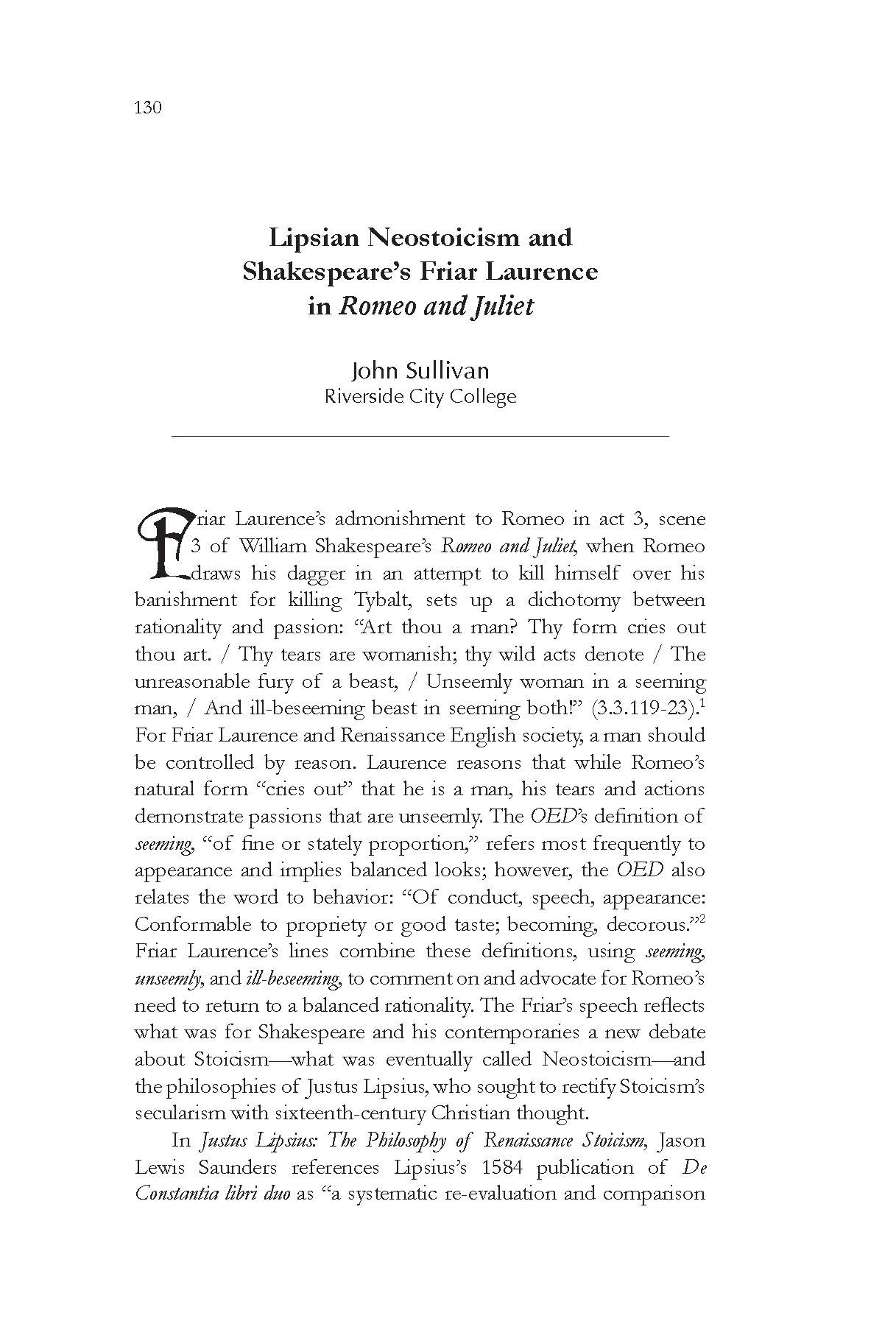Lipsian Neostoicism and Shakespeare’s Friar Laurence in Romeo and Juliet
Main Article Content
Abstract
Friar Laurence’s admonishment to Romeo in act 3, scene 3 of William Shakespeare’s Romeo and Juliet, when Romeo draws his dagger in an attempt to kill himself over his banishment for killing Tybalt, sets up a dichotomy between rationality and passion: “Art thou a man? Thy form cries out thou art. / Thy tears are womanish; thy wild acts denote / The unreasonable fury of a beast, / Unseemly woman in a seeming man, / And ill-beseeming beast in seeming both!” (3.3.119-23).1 For Friar Laurence and Renaissance English society, a man should be controlled by reason. Laurence reasons that while Romeo’s natural form “cries out” that he is a man, his tears and actions demonstrate passions that are unseemly. The OED’s definition of seeming, “of fine or stately proportion,” refers most frequently to appearance and implies balanced looks; however, the OED also relates the word to behavior: “Of conduct, speech, appearance: Conformable to propriety or good taste; becoming, decorous.”2 Friar Laurence’s lines combine these definitions, using seeming, unseemly, and ill-beseeming, to comment on and advocate for Romeo’s need to return to a balanced rationality. The Friar’s speech reflects what was for Shakespeare and his contemporaries a new debate about Stoicism—what was eventually called Neostoicism—and the philosophies of Justus Lipsius, who sought to rectify Stoicism’s secularism with sixteenth-century Christian thought.
